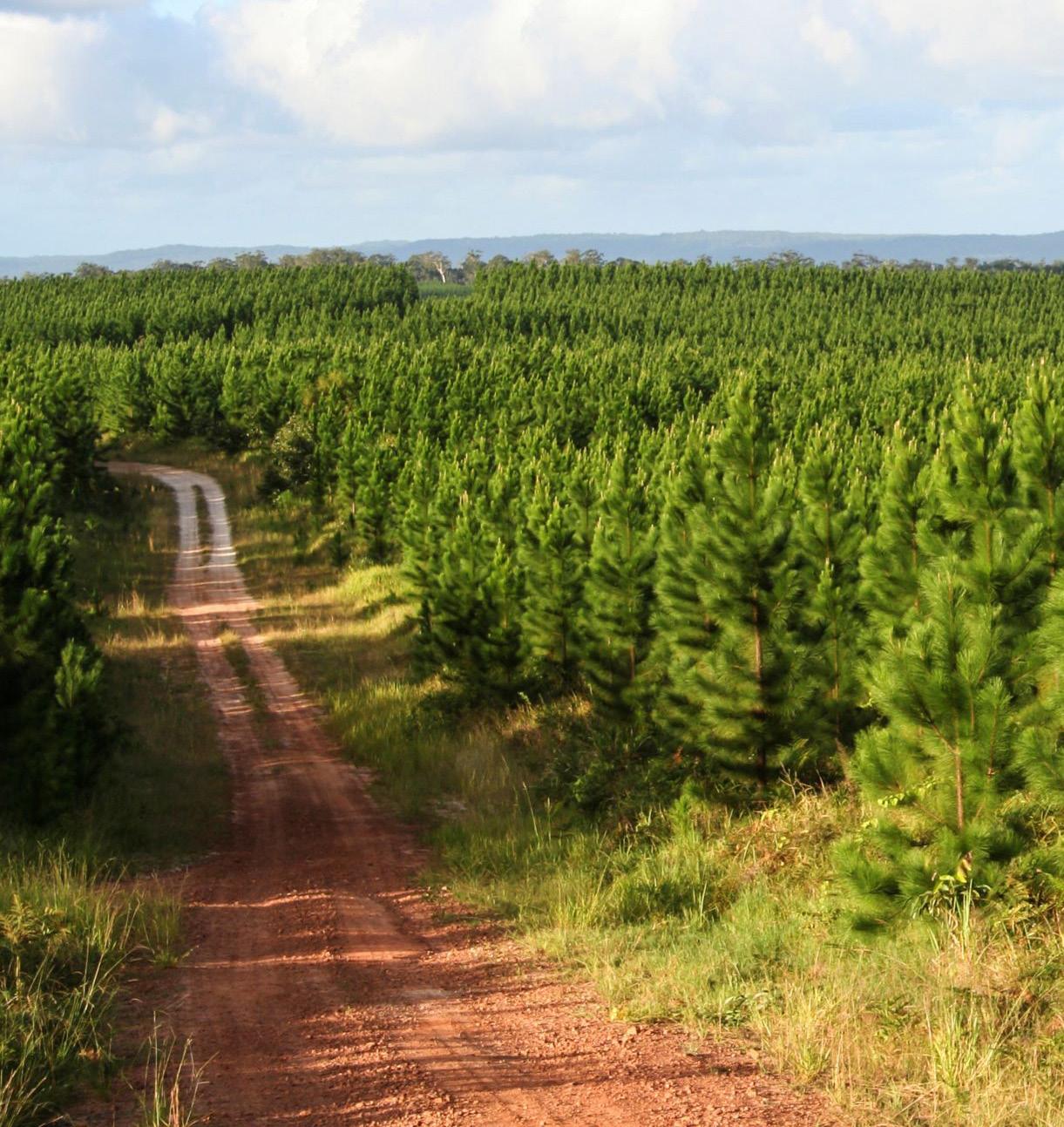
4 minute read
➡Guest View: Marek Gizot, Vice President Stafford Capital Partners Forestry in institutional portfolios
To meet the projected wood demand in 2050, whilst conserving the world’s natural forests, will require investment into at least 3 million hectares of new plantation forests annually over the next decade. Investing in natural capital has entered institutional portfolios as an established and proven strategy that provides mitigation for climate change, biodiversity and resource challenges whilst delivering long-term sustainable returns. Through rising demand for primary wood products, the forestry sector is experiencing a growing reliance on new plantation forests to alleviate pressure on natural forest resources. In the path to tackle these global challenges, the spotlight is falling on institutional investors to allocate capital into impact investment opportunities such as forestry solutions.
Advertisement
Plantations will supply future wood demand
Last month, the UN’s Food and Agriculture Organization (FAO) published a report focusing on the outlook for the global forest sector and highlighted that global consumption of primary processed wood products is expected to grow by 37% between 2020 and 2050. In 2020, worldwide production of industrial roundwood reached just under 2 billion m3. Planted forests contributed 46% of this supply, despite comprising just 7% of the world’s total forest area.
To meet the anticipated growth in demand, the FAO estimates that at least 33 million hectares of additional highly productive plantation forest will need to be established. Most of these new plantations will take 20-30 years before they reach maturity, implying that most of them will need to be established within the next decade. This means that more than 3 million hectares of new plantations will need to be established annually.
Further research from a team at the Thünen Institute of Forestry , suggested biodiversity strategies proposed by the EU could materially reduce wood supply from the region’s existing forests. This, and similar strategies in other regions, could lead to an even greater reliance on plantation forests to meet future demand.
Wood as a substitute
Another factor impacting future wood demand is the increasing use of wood products as a substitute for traditional construction materials. The manufacture of wood products releases significantly less CO2 than materials such as concrete or steel and offers a significant opportunity to reduce emissions and shape climate strategy. Furthermore, the transfer of carbon from sustainably managed plantations to long-lived wood products used in buildings allows them to become a unique carbon sink.
In recognition of this, the FAO’s report estimated that this substitution effect could lead to an additional 8% in demand for wood products by 2050. To meet this demand would call for a further 7 million hectares, taking the total area of new plantations required to 40 million hectares.
The role of private capital
The FAO indicates that the cost for establishing pine and eucalyptus plantations ranges between USD 500 and USD 1,200 per hectare. Stafford believes that these costs are at the low end for good quality commercial plantations and estimates that USD 10 billion per annum would be required to establish 40 million hectares over the next 10 years, with a further USD 12 billion per annum needed for land acquisition.
Accordingly, in order for these plantations to be established over the next decade, a total of USD 220 billion will need to be provided, predominantly from the private sector. To facilitate this, Stafford is raising a USD 1 billion Carbon Offset Opportunity Fund focused on new plantation development.
Stafford’s Carbon Offset Opportunities Fund (an Article 9 SFDR Impact Fund)
The insights provided by the FAO align strongly with Stafford’s decision to complement its 20-year long timberland strategy with one focused on carbon. The expansion of well-managed commercial plantations is critical to:
1) Supplying raw wood materials sustainably
2) Mitigating climate change
3) Providing biodiversity conservation by reducing harvesting pressure on natural forests
Stafford’s Carbon Fund provides access to a diversified portfolio of forestry assets, whilst generating a supply of carbon credits verified by recognised international carbon standards. The strategy welcomes investors that are looking to allocate capital into solutions that deliver attractive returns and positive impact.

Pine plantation forest in Southern Gippsland, Australia.
Capital at risk. For investment professionals only. Not intended for retail investors. Past performance is no guide to the future. This advertorial is for informational purposes only and does not constitute investment advice.








